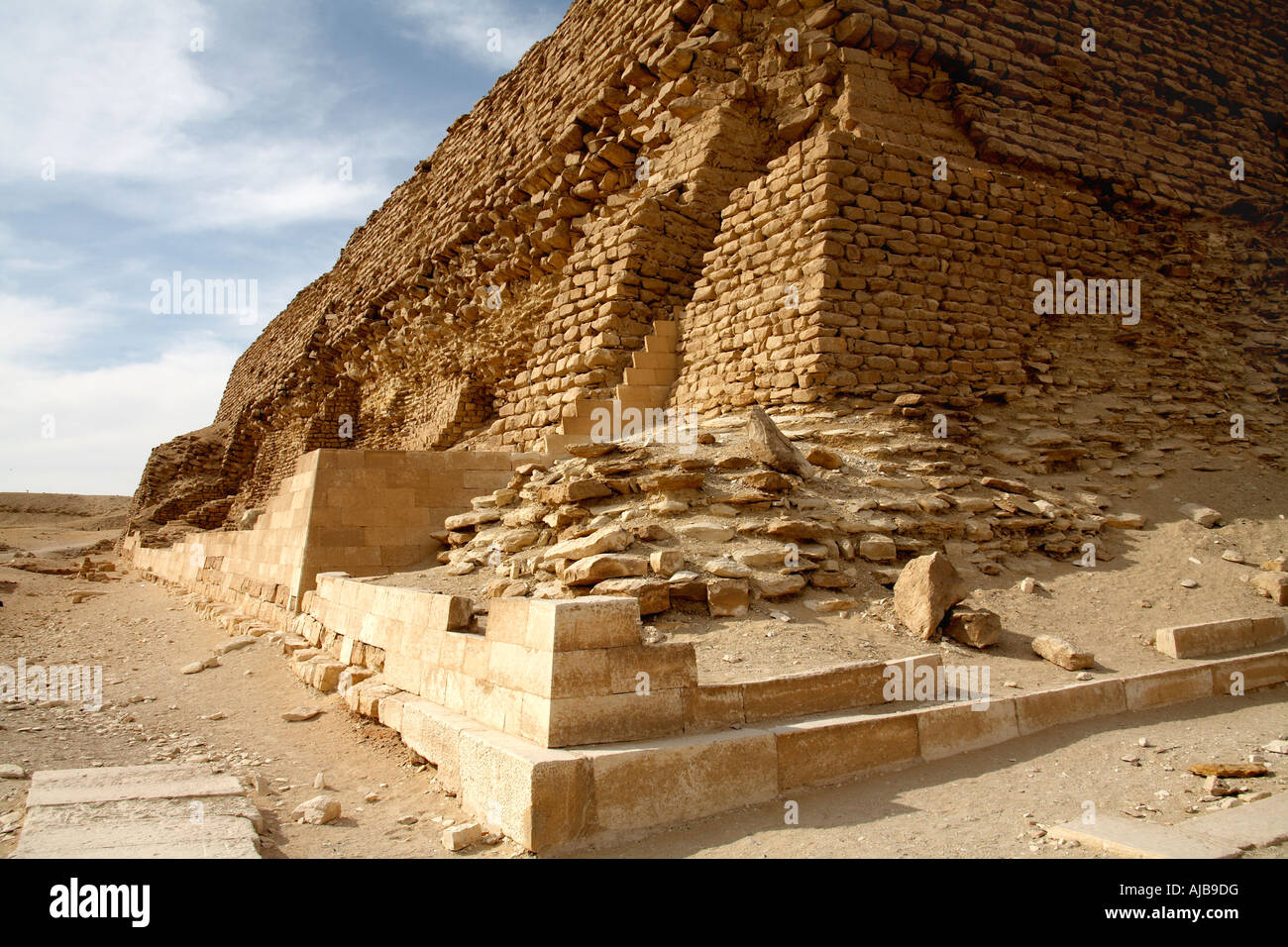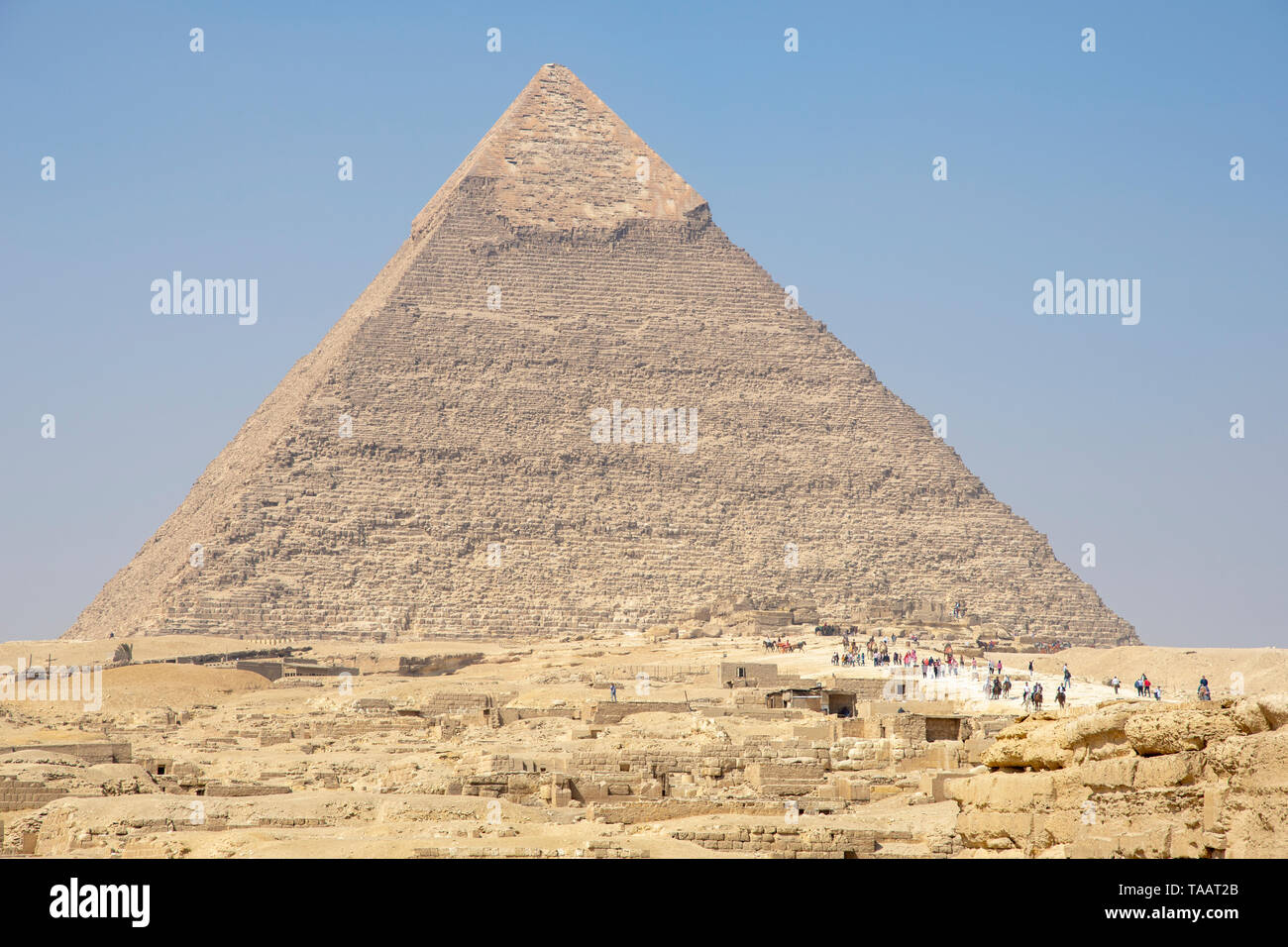Pyramid facing stones have always fascinated historians and archaeologists alike. These smooth, polished blocks form the outer layer of ancient pyramids, giving them their iconic shape. Imagine standing in front of the Great Pyramid of Giza, marveling at how these massive stones were perfectly aligned thousands of years ago. It's like looking at a masterpiece created by ancient architects who knew exactly what they were doing.
When you think about pyramids, it's not just the size that impresses you but also the attention to detail in every stone. Facing stones aren't just random pieces of rock; they're carefully crafted to fit together like a puzzle. This level of precision tells us a lot about the knowledge and skills of ancient civilizations.
But here's the thing – most people don't realize how important these facing stones are. They're not just decorative elements; they serve a functional purpose too. By covering the core structure with smooth limestone, the pyramids were protected from erosion and weathering. It's like putting a shield around something precious to keep it safe for centuries.
Read also:Daniel Sharman Wife The Story Behind The Man And His Partner
What Are Pyramid Facing Stones?
Pyramid facing stones refer to the outer layer of stones that cover the core structure of a pyramid. These stones are usually made from high-quality limestone or sometimes granite for the lower levels. The ancient Egyptians chose these materials because they were durable and could be polished to a brilliant shine. If you've ever seen pictures of pyramids in their original state, you'd understand why they were called "mountains of light."
Nowadays, many pyramids have lost their facing stones due to natural erosion, earthquakes, or even human activity. But if you visit certain sites like the Bent Pyramid near Dahshur, you can still see remnants of the original facing stones intact. It's like stepping back in time and seeing how these structures were meant to look.
Here's a quick rundown of what makes facing stones so special:
- High-quality materials used for durability
- Precision cutting and fitting techniques
- Polished surface that reflects sunlight
- Protective layer against environmental damage
History of Pyramid Construction and Facing Stones
The history of pyramid construction is a fascinating journey through ancient engineering brilliance. Facing stones played a crucial role in this process, acting as the final touch that transformed rough masonry into architectural masterpieces. Imagine the effort it took to quarry, transport, and place each stone with millimeter precision.
Back in the day, the ancient Egyptians didn't have modern machinery, but they made up for it with ingenuity. They developed advanced techniques for shaping and polishing stones using copper tools and abrasive sand. Some historians believe they even used water to lubricate the surfaces while cutting, making the process smoother and more efficient.
Evolution of Construction Techniques
Over time, the methods for creating facing stones evolved. Early pyramids, like the Step Pyramid of Djoser, had simpler designs compared to later structures like the Great Pyramid. This progression shows how builders learned from previous projects and refined their techniques.
Read also:Chae Sangwoo The Mastermind Of Squid Game And His Intriguing Journey
One interesting fact is that the facing stones on the Great Pyramid were originally covered in white Tura limestone. This material came from quarries on the east bank of the Nile and was transported to the site using barges. Once there, workers would polish the stones until they gleamed under the desert sun.
Materials Used in Pyramid Facing Stones
When it comes to pyramid facing stones, material choice was everything. The ancient Egyptians weren't just picking rocks at random; they selected specific types based on their properties and availability. Limestone was the most common material, especially for the upper levels where its lighter weight was an advantage.
However, for the base layers, they often used granite due to its strength and ability to withstand heavy loads. This combination of materials created a balanced structure that could stand the test of time – literally thousands of years!
Quarrying and Transporting Stones
Quarrying facing stones was no small feat. Workers would first locate suitable rock formations, then extract blocks using simple yet effective tools. Copper chisels and wooden wedges helped them shape the stones into manageable sizes before transporting them to the construction site.
Transportation itself was an impressive operation. Stones weighing several tons were moved using sledges and lubricated tracks made from Nile mud. Some theories suggest they might have even used canal systems to float the stones closer to the pyramid site.
The Importance of Precision in Facing Stone Placement
Precision was key when it came to placing pyramid facing stones. Each stone had to fit perfectly with its neighbors, creating a seamless surface that would last for millennia. This level of accuracy wasn't just about aesthetics; it was essential for the structural integrity of the entire pyramid.
Builders achieved this precision through a combination of advanced surveying techniques and careful planning. They used leveling instruments made from water-filled basins to ensure each course of stones was perfectly aligned. Once in place, the stones were polished to remove any imperfections, resulting in a smooth, gleaming exterior.
Measuring Tools of the Ancients
Although they didn't have modern technology, the ancient Egyptians were masters of measurement. They developed tools like cubit rods and plumb bobs to ensure accuracy in their constructions. These tools helped them maintain consistent dimensions across the entire pyramid, even as it rose hundreds of feet into the air.
Imagine standing at the base of a pyramid and looking up at its perfectly straight sides. That's the result of thousands of workers collaborating under the guidance of skilled engineers who knew exactly what they were doing.
Restoration and Preservation of Pyramid Facing Stones
Today, efforts are underway to preserve the remaining pyramid facing stones for future generations. Restoration projects focus on stabilizing existing structures while minimizing interventions that could alter their historical authenticity. This delicate balance requires careful planning and collaboration between archaeologists, engineers, and conservation specialists.
In some cases, modern materials are used to reinforce weakened areas without affecting the original appearance. For example, epoxy resins can be injected into cracks to prevent further deterioration. These techniques allow us to enjoy the beauty of these ancient monuments while ensuring their survival for years to come.
Challenges in Preservation
Preserving pyramid facing stones isn't without its challenges. Environmental factors like wind, rain, and temperature fluctuations constantly threaten these ancient structures. Additionally, human activities such as tourism and urban development can impact the surrounding landscape, affecting the pyramids' stability.
One solution is implementing strict regulations around protected sites. By controlling visitor numbers and monitoring environmental conditions, we can reduce the impact of external factors on these irreplaceable treasures. It's like creating a protective bubble around something precious to keep it safe from harm.
Cultural Significance of Pyramid Facing Stones
Beyond their structural importance, pyramid facing stones hold immense cultural significance. They represent the pinnacle of ancient Egyptian achievement in art, architecture, and engineering. The smooth, gleaming surfaces reflected the sun's rays, symbolizing the pharaoh's divine connection to the gods.
In Egyptian mythology, the pyramid itself was seen as a stairway to heaven, allowing the deceased pharaoh's soul to ascend to the afterlife. The facing stones played a crucial role in this symbolism, creating an almost celestial appearance that inspired awe in anyone who beheld them.
Symbolism in Ancient Architecture
Every aspect of pyramid design was imbued with meaning. The choice of materials, the orientation of the structure, and the precision of the facing stones all contributed to the overall message of power and eternity. By aligning the pyramids with astronomical bodies, the builders reinforced the connection between earthly rulers and celestial forces.
This symbolic language continues to resonate with people today, drawing millions of visitors to Egypt each year. Standing in front of a pyramid, you can't help but feel a sense of wonder at the ingenuity and dedication of those who built them so long ago.
Modern Research and Discoveries
Advancements in technology have opened new avenues for studying pyramid facing stones. Techniques like laser scanning and ground-penetrating radar allow researchers to examine these structures in unprecedented detail. These methods reveal hidden features and provide insights into how the pyramids were constructed.
One recent discovery involves the use of microwaves to detect anomalies within the pyramid's core structure. This non-invasive technique helps identify areas where facing stones may have been removed or altered over time. By understanding these changes, we gain a better appreciation of how the pyramids have evolved throughout history.
Impact of Technology on Archaeology
Technology isn't just about uncovering secrets; it's also about preserving knowledge for future generations. Digital models created from scans of pyramid facing stones allow researchers to study these structures without physically touching them. This approach helps protect the original materials while still providing valuable information.
Imagine being able to explore a pyramid virtually, zooming in on individual facing stones to examine their craftsmanship up close. These advancements make ancient history more accessible than ever before, bringing the wonders of the past into the digital age.
Conclusion: Why Pyramid Facing Stones Matter
In conclusion, pyramid facing stones represent more than just the outer layer of ancient structures. They embody the skill, knowledge, and creativity of a civilization that pushed the boundaries of what was possible. From their precise placement to their symbolic significance, these stones tell a story that continues to captivate us today.
As we continue to learn more about pyramid facing stones through research and preservation efforts, we deepen our understanding of the ancient world. This knowledge not only enriches our appreciation of history but also inspires modern architects and engineers to achieve new heights in their own work.
So next time you find yourself gazing at a pyramid, take a moment to appreciate the facing stones that give it its iconic shape. And remember, if you enjoyed this article, don't forget to share it with others who might be equally fascinated by the wonders of ancient Egypt!
Table of Contents
- What Are Pyramid Facing Stones?
- History of Pyramid Construction and Facing Stones
- Materials Used in Pyramid Facing Stones
- The Importance of Precision in Facing Stone Placement
- Restoration and Preservation of Pyramid Facing Stones
- Cultural Significance of Pyramid Facing Stones
- Modern Research and Discoveries
- Symbolism in Ancient Architecture
- Impact of Technology on Archaeology
- Conclusion: Why Pyramid Facing Stones Matter


